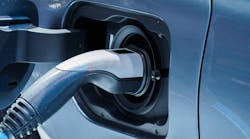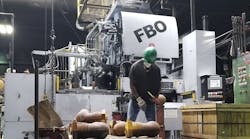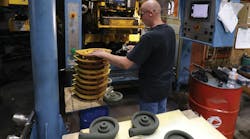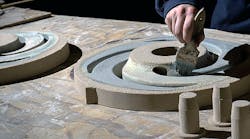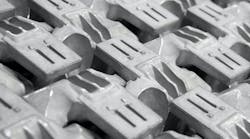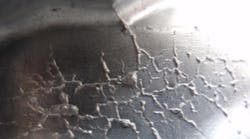ULTRASEAL INTERNATIONAL reported that diecasters might save up to 85% of the total operating costs of diecasting machinery (800-metric ton comparison) by using a water-free die lubricant applied in an electrostatic spray. It will demonstrate the advantages in its presentation at Euroguss 2014, next month.
The Aoki Science Institute of Japan developed the oil-based die lubricant, and has granted sole European distribution rights to Ultraseal International, a developer of vacuum impregnation and porosity sealants for metalcastings. The company was first to market modern methacrylate-based impregnation sealants, and first to market recyclable sealants, and now produces the Rexeal 100™ recycling sealant.
Tim Butler, who heads the Special Projects effort at Ultraseal, said the Lubrolene WFR formulation saves operating costs, “but the benefits don’t stop there: the quality of parts is better, with fewer and smaller porosities and rejection rates plummeting to almost negligible levels when compared to water-based die release agents.”
The savings mainly arise because Lubrolene WFR can be applied at much higher temperatures than conventional water-based lubricants, which are only effective between 150°C and 250°C (300-500°F.) As a result there is less thermal stress on dies, compared to water-based die release agents, which extends the service life of the dies significantly – another source of substantial savings.
In addition, only a small volume of lubricant is used, cycle times are shorter, improving efficiency, and the quality of parts produced is better because there is less risk of porosity and water staining.
Another important advance for diecasting involves the Lubrolene WFR-EC oil-based products’ electrostatic spray application, a “step change in technology,” according to Ultraseal.
Electrostatic spraying is especially suited to the casting of complex parts as it creates a “wraparound effect” with the electric field attracting the spray to the far side and more remote surfaces of the die. This speeds up production times, reduces the amount lubricant used, and gives better coverage over the whole part, including awkward corners such as surfaces behind slide cores and pins.

